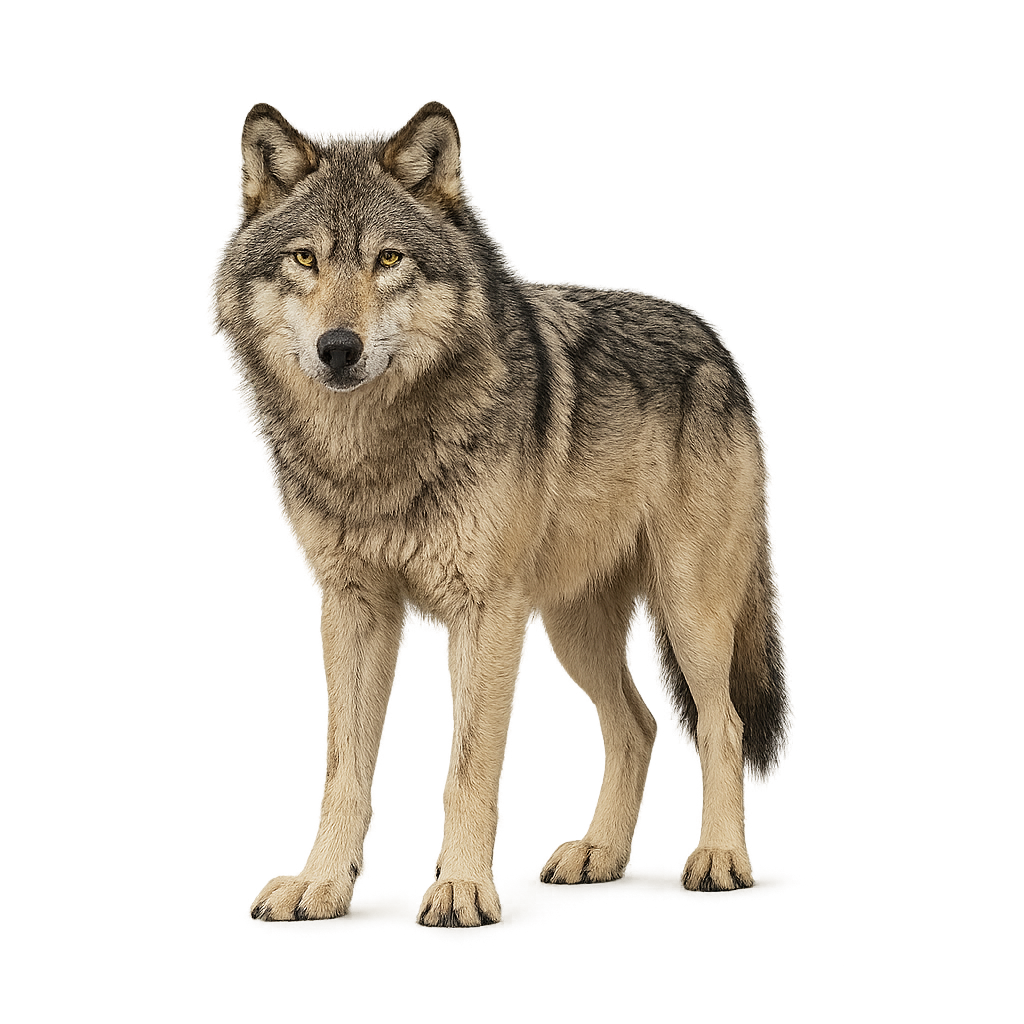Your wildlife photography guide.
Explore the gray wolf in detail, study its behavior, prepare your shots.
Where to observe and photograph the gray wolf in the wild
Learn where and when to spot the gray wolf in the wild, how to identify the species based on distinctive features, and what natural environments it inhabits. The WildlifePhotographer app offers tailored photography tips that reflect the gray wolf’s behavior, helping you capture better wildlife images. Explore the full species profile for key information including description, habitat, active periods, and approach techniques.
Gray wolf
Scientific name: Canis lupus

IUCN Status: Least Concern
Family: CANIDAE
Group: Mammals
Sensitivity to human approach: Very shy
Minimum approach distance: 30 m
Rut period: January to April
Gestation: 61-64 jours
Births: March to June
Habitat:
Forests, mountains, and tundra
Activity period :
Mainly active at night, generally discreet during the day.
Identification and description:
The Gray Wolf is a large carnivore, often considered the ancestor of all modern subspecies of wolves. It measures between 1.2 and 1.8 meters in length, with a tail of 30 to 50 cm, and weighs between 25 and 40 kg, though some individuals can reach 70 kg. Its coat is typically gray, but it can also include shades of white, brown, and black depending on the region and season. The Gray Wolf lives in a variety of habitats, from deep forests to tundra regions, and from mountains to plains. It is a social predator that lives in packs, cooperating with other members of its group to hunt prey such as deer, elk, bison, and other large mammals. The Gray Wolf plays an essential role in ecosystem balance by regulating herbivore populations. Although it is protected in many areas, it remains threatened by habitat loss, hunting, and conflicts with humans.
Recommended lens:
400 mm – adjust based on distance, desired framing (portrait or habitat), and approach conditions.
Photography tips:
Approach slowly and discreetly. The gray wolf is an animal that prefers to avoid humans and can easily move away if disturbed. Use a telephoto lens to capture images without interfering with its natural behavior.
Photograph early in the morning or late in the afternoon, when the light is soft and the wolf is more active, especially during its movements or hunting.
Capture moments of group activity or hunting: Wolves often live in packs, offering opportunities to photograph social interactions or hunting behaviors.
Be patient and respectful: The gray wolf is a very stealthy animal, and it can be hard to spot. Wait calmly for the right moment, without trying to follow the animal too closely.
The gray wolf is a protected and endangered species in many regions due to habitat loss and conflicts with humans. It is crucial to respect its territory, avoid disturbing its hunting sites, and follow local conservation regulations. Photography should be a way to celebrate and protect this species while ensuring that its natural behavior is never disturbed.
The WildlifePhotographer App is coming soon!
Be the first to explore the best nature spots, track rutting seasons, log your observations, and observe more wildlife.
Already 1 429 wildlife lovers subscribed worldwide

